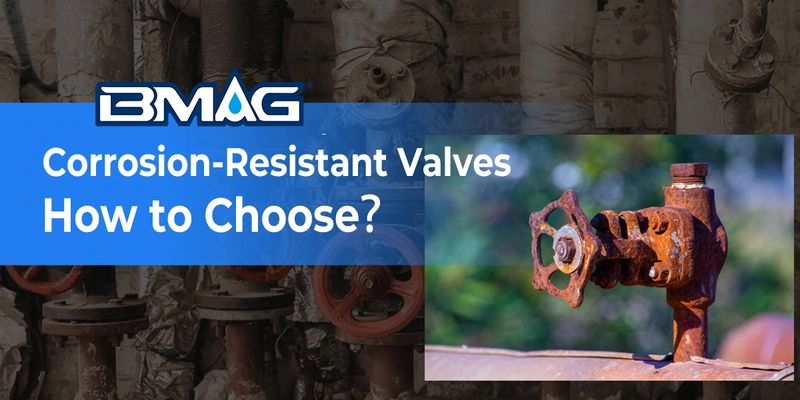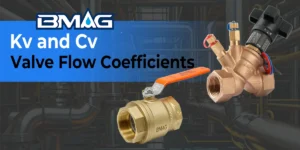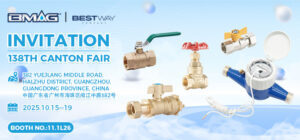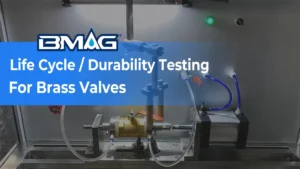בכל מערכת בקרת נוזלים, מצינורות תעשייתיים מורכבים ועד אינסטלציה למגורים יומיומיים, שסתומים הם מתגים חשובים. למרות זאת, when these valves are exposed to corrosive media or harsh environments over time, corrosion has become the number one culprit threatening valves. לָכֵן, correctly selecting and using a corrosion-resistant valve is not just a technical decision but a crucial investment in the safety, יְעִילוּת, and longevity of your entire system.
Let BMAG take you through a systematically analyzing the key factors for choosing corrosion-resistant valves, and providing a detailed breakdown of the characteristics, pros, cons, and applications of mainstream brass corrosion-resistant valves, bronze corrosion-resistant valves, וכן plastic corrosion-resistant valves. To help you make the most informed decision among a myriad of options.
תוֹכֶן הָעִניָנִים
לְמַתֵג1. What is Valve Corrosion and Why is it So Critical?
Valve corrosion is the deterioration of a valve’s material due to chemical reactions with its environment (לְמָשָׁל., the fluid medium, external atmosphere). This damage takes multiple forms, and understanding them is the first step in proper selection.
Common Types of Valve Corrosion
- Uniform Corrosion: Corrosion occurs evenly across the entire surface of the valve exposed to the medium. The corrosion rate of the valve can be observed and predicted, it can lead to a thinning of the valve body wall over time, reducing its pressure-bearing capacity.
- Galvanic Corrosion: Occurs when two dissimilar metals are in contact in the presence of an electrolyte (like water). The less noble metal becomes the anode and corrodes at an accelerated rate. This is a critical concern when mixing valves and pipes of different metallic materials in a system.
- Pitting Corrosion: A small-scale form of corrosion that creates small holes or “pits” in the metal. It is hidden and highly destructive; it cannot be discovered without careful observation, and cause leaks finally.
- Crevice Corrosion: Due to the difference in oxygen concentration inside and outside the crevice, an electrochemical reaction driven by this oxygen concentration difference (differential aeration) occurs. This accelerates the dissolution of metal ions, which then react with other ions (such as chloride ions) to cause corrosion.
- Dezincification: A process specific to brass valves. In conditions containing chloride ions, the zinc in the brass alloy is preferentially leached out, leaving behind a porous and brittle copper structure, which dramatically reduces the valve’s mechanical strength.
The Severe Consequences of Corrosion
- System Leaks: Leads to the loss of the medium in the pipeline or, worse, the release of toxic or hazardous substances, causing safety incidents and environmental pollution.
- Operational Failure: Corrosion byproducts can clog the valve, increase pressure loss and reduce flow velocity, even fail to open or close properly, and disrupt the entire system’s efficiency.
- Reduced Lifespan: Shortens the service life of the valve, increasing replacement frequency and maintenance fees.
- Safety Risks: Corrosion of pressure-bearing components can lead to serious consequences, catastrophic rupture under high pressure.
Understanding these dangers makes it clear why selecting a corrosion-resistant valve that matches your operating conditions is so vitally important.
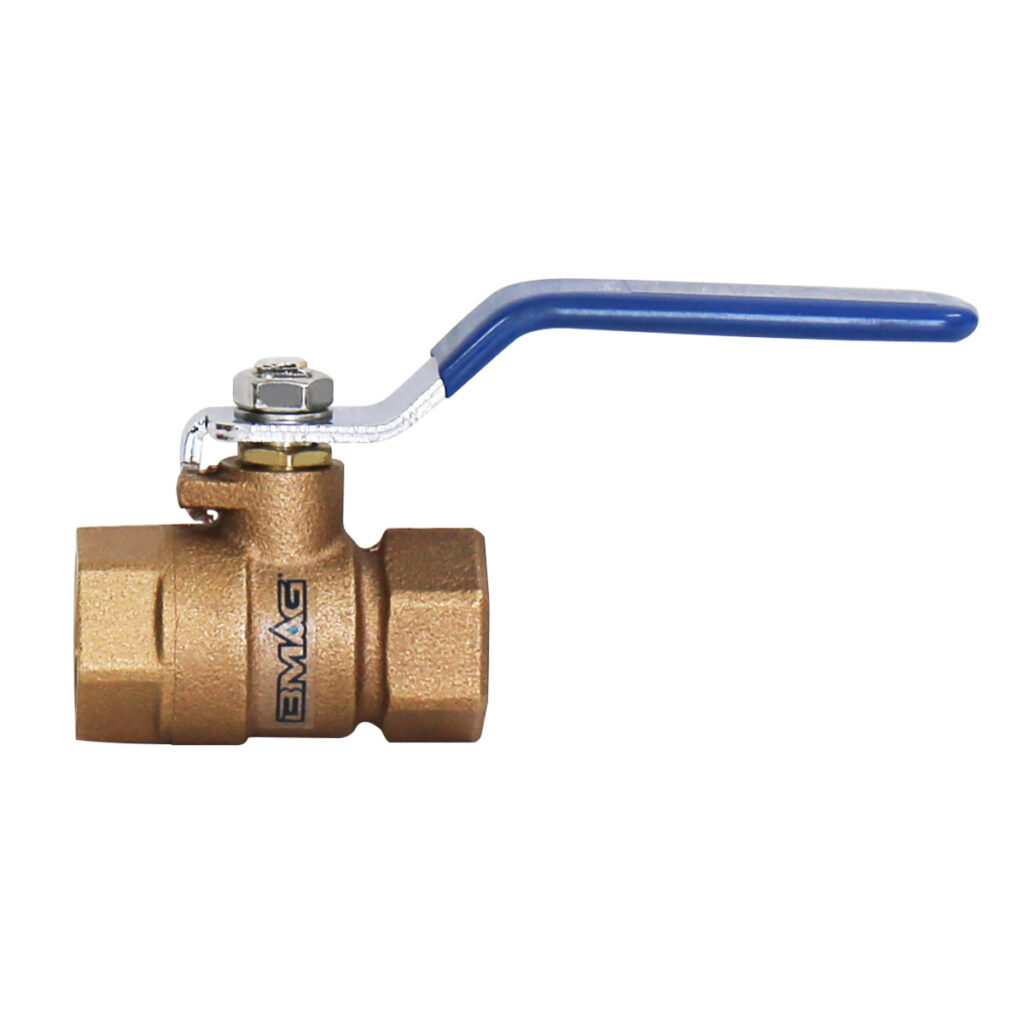
2. Key Factors for Selecting a Corrosion-Resistant Valve
Before choosing the right valve material, you must comprehensively assess the On-site environment it will face. Here are four core factors to consider:
- Fluid Properties: This is the primary factor determining the valve material.
- תרכובת כימית: Is the medium an acid, alkali, salt, organic solvent, or petroleum product? What is its concentration? לדוגמה, PVC has good resistance to most acids and bases but not to certain solvents.
- טֶמפֶּרָטוּרָה: In most cases, high temperatures can accelerate corrosion rates and affect the mechanical properties of materials. לְמָשָׁל, CPVC has a higher temperature tolerance than PVC, while metal valves can handle much higher temperatures than plastic valves.
- Pressure: The valve material must be able to withstand the system’s maximum operating pressure. Plastic valves generally have lower pressure ratings than metal valves. When valves are tested at the factory, they are generally tested at 1.5 times the target pressure to ensure safety during use.
- Flow Rate and Abrasives: High flow velocities or the presence of solid particles in the medium can cause erosion-corrosion, requiring wear-resistant materials like bronze or specific engineering plastics.
- Environmental Factors:
- The external environment where the valve is installed is equally important. לדוגמה, valves installed in coastal areas or near chemical plants need to resist salt spray or corrosive atmospheric gases, making bronze corrosion-resistant valves an excellent choice in these scenarios. For outdoor applications, the material’s UV resistance is also a consideration; some plastics valves require the addition of UV stabilizers.
- Valves Mechanical Requirements:
- Beyond corrosion resistance, the valve must have sufficient strength, toughness, and wear resistance to withstand operating torque, pipeline stress, and vibration. Metal valves are better than plastic valves in this regard.
- Valves Cost and Lifespan:
- Valves purchase cost is a very important consideration, but it should never be the only one. You must weigh the long-term value of the valve, including its expected service life, maintenance frequency, and potential downtime costs from failure. Sometimes, a slightly more expensive, higher-quality valve will provide a far greater return on investment through reliability and lower maintenance.
3. In-Depth Analysis of Mainstream Corrosion-Resistant Valve Materials
הַבָּא, we will focus on three of the most common corrosion-resistant valve materials—brass, bronze, and plastic—for a detailed comparative analysis.
1. Brass Corrosion-Resistant Valves
Brass is an alloy of copper and zinc and is one of the most common valve materials, especially in residential and commercial applications.
- עמידות בפני קורוזיה: Offers good resistance to neutral water, non-corrosive liquids, and gases. Its main weakness is poor resistance to ammonia, acetylene, and most acids. It is also susceptible to dezincification in certain water conditions.
- יתרונות: Relatively low cost, high cost-effectiveness, good machinability, and adequate mechanical strength for most standard applications.
- חסרונות: Limited chemical resistance range and risk of dezincification.

Representative Brass Grades
- C36000 (Free-Cutting Brass): One of the most common brass rod materials, known for its outstanding machinability, making it ideal for threaded fittings and valve stems. למרות זאת, its corrosion resistance is average, and it is not recommended for corrosive water where dezincification is a risk.
- C27450 (Dezincification-Resistant / Lead-Free Brass): Specifically engineered for potable water systems. This alloy is formulated (often with small additions of arsenic, phosphorus, or antimony) to inhibit dezincification. It complies with lead-free regulations, making it the ideal choice for valves and fittings in contact with aggressive water.

| חיפוש מוצרים | Alloy No. | Cu% | Pb% | Sn% | Zn% | Fe% | P% | Ni% | Al% |
| פליז | CW511L | 61-63 | 0.2 | 0.1 | Rem. | 0.1 | – | 0.1 | 0.05 |
| פליז | CW602N | 61-63 | 1.7-2.8 | 0.1 | Rem. | 0.1 | – | 0.3 | 0.05 |
| פליז | CW611N | 57-60 | 0.8-1.6 | 0.3 | Rem. | 0.3 | – | 0.3 | 0.05 |
| פליז | CW614N | 57-59 | 2.5-3.5 | 0.3 | Rem. | 0.3 | – | 0.3 | 0.05 |
| פליז | CW617N | 57-59 | 1.6-2.5 | 0.3 | Rem. | 0.3 | – | 0.1 | 0.05 |
| פליז | CZ 132 | 60-63 | 1.7-2.8 | 0.2 | Rem. | 0.1 | – | – | – |
| פליז | C46500 | 59-62 | 0.2 | 0.5-1 | Rem. | 0.1 | – | – | – |
2. Bronze Corrosion-Resistant Valves
Bronze is primarily an alloy of copper and tin but can also contain other elements. Its corrosion resistance is generally superior to that of brass.
- עמידות בפני קורוזיה: Possesses excellent resistance to seawater and salt spray, earning it the nickname “marine metal.” It resists a wider range of chemicals than brass and has better resistance to pitting corrosion.
- יתרונות: Superior resistance to seawater corrosion, higher strength, and wear resistance than brass.
- חסרונות: Bronze cost is higher than brass.
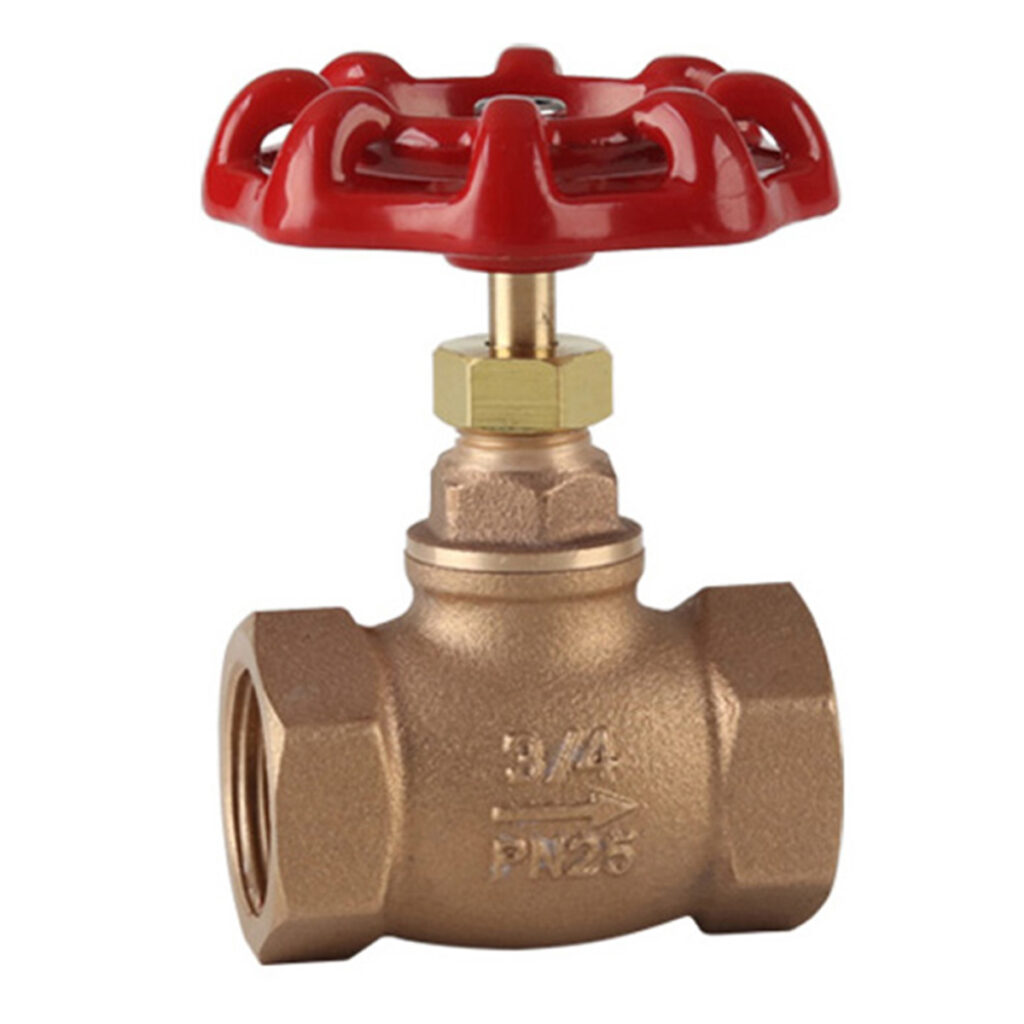
Representative Bronze Grades
- C95400 (Aluminum Bronze): A high-strength alloy containing aluminum, iron, and nickel. It offers excellent resistance not only to seawater but also to erosion-corrosion and cavitation in many acidic environments. Due to its high strength and wear resistance, it is often used in valves of heavy-duty, high-pressure marine engineering applications and chemical pumps.
- C93200 (Leaded Tin Bronze / SAE 660): Also known as bearing bronze. This alloy has excellent anti-friction properties and good machinability. While primarily used for low-to-medium pressure valves and fittings, especially in applications requiring some lubricity. Its corrosion resistance is fair, suitable for general water, שֶׁמֶן, and air systems.

| חיפוש מוצרים | Alloy No. | Cu% | Pb% | Sn% | Zn% | Fe% | P% | Ni% | Al% |
| בְּרוֹנזָה | C83600 | 84-86 | 4.0-6.0 | 4.0-6.0 | 4.0-6.0 | 0.3 | 0.05 | 1 | 0.005 |
| בְּרוֹנזָה | C89325 | 84-88 | 0.1 | 9.00-11 | 1 | 0.15 | 0.1 | 1 | 0.005 |
| בְּרוֹנזָה | C89831 | 87-91 | 0.1 | 2.70-3.7 | 2.00-4 | 0.3 | 0.05 | 1 | 0.005 |
| בְּרוֹנזָה | C89833 | 86-91 | 0.09 | 4.00-6 | 2.00-6 | 0.3 | 0.05 | 1 | 0.005 |
| בְּרוֹנזָה | C89835 | 85-89 | 0.09 | 6.00-7.5 | 2.00-4 | 0.2 | 0.1 | 1 | 0.005 |
| בְּרוֹנזָה | C89844 | 83-86 | 0.2 | 3.00-5 | 7.00-10 | 0.3 | 0.05 | 1 | 0.005 |
| בְּרוֹנזָה | C90300 | 86-89 | 0.3 | 7.50-9 | 3.00-5 | 0.2 | 0.05 | 1 | 0.005 |
| בְּרוֹנזָה | C90800 | 85-89 | 0.25 | 11.00-13 | 0.25 | 0.15 | 0.3 | 0.5 | 0.005 |
| בְּרוֹנזָה | C90810 | Rem. | 0.25 | 11.00-13 | 0.3 | 0.15 | 0.15-0.8 | 0.5 | 0.005 |
3. Plastic Corrosion-Resistant Valves
With the development of chemical materials science, plastic valves have carved out an increasingly important place in modern industry due to their exceptional chemical resistance.
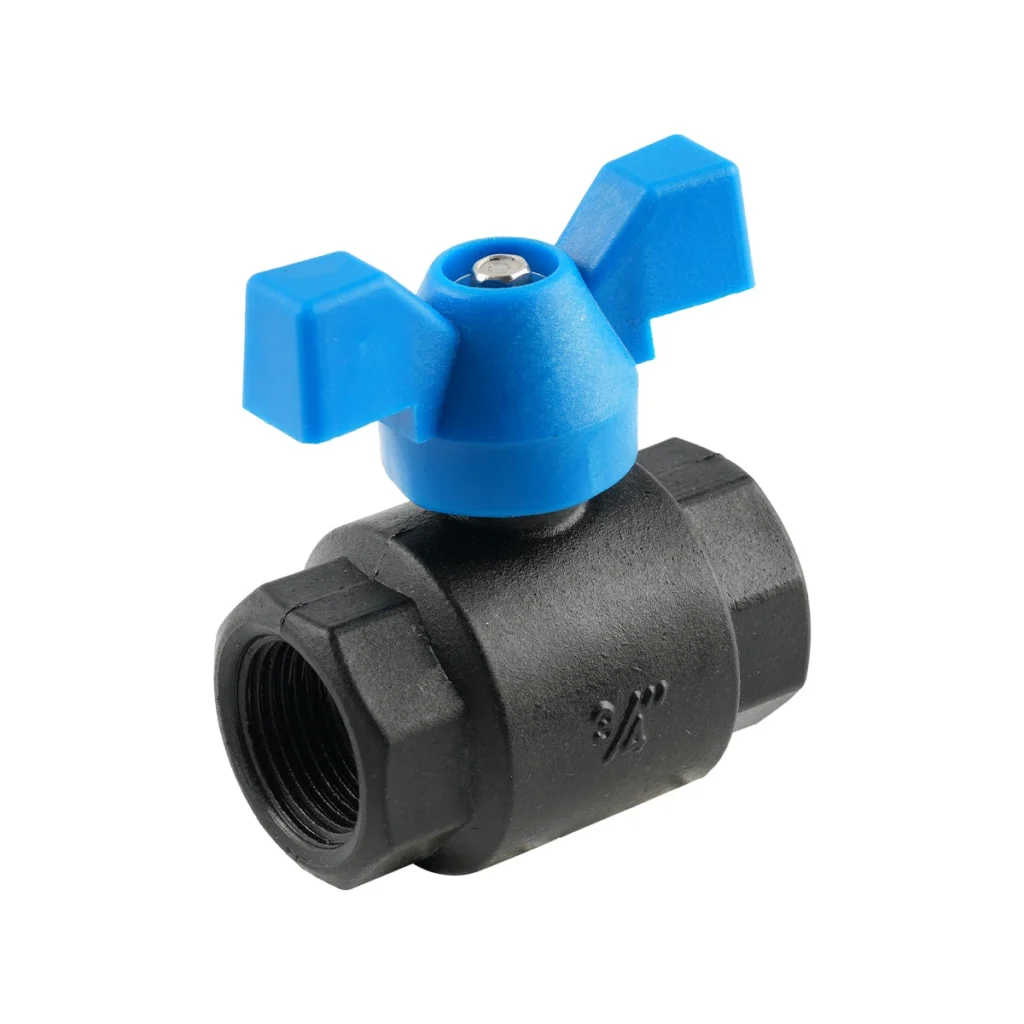
- Common Materials and Characteristics:
- PVC Valves(Polyvinyl Chloride): The most common plastic valve material. It has excellent resistance to water and a wide range of acids, alkalis, and salts. It is inexpensive but has limited temperature and pressure ratings (typically below 60°C / 140°F).
- CPVC שסתומים(Chlorinated Polyvinyl Chloride): An “upgraded” version of PVC. The chlorination process gives it a higher temperature limit (up to around 90°C / 194°F) while maintaining excellent chemical resistance.
- PP שסתומים(Polypropylene): A lightweight material with good resistance to a broad spectrum of acids, alkalis, and organic solvents.
- PVDF שסתומים(Polyvinylidene Fluoride): ה “king of plastic valves.” It offers outstanding chemical resistance to most inorganic and organic chemicals, including halogens (like chlorine and bromine) and strong oxidizing acids. It also features high purity, high strength, and a high temperature rating (up to 140°C / 284°F), but it is the most expensive option.
- יתרונות: Good chemical resistance, immunity to galvanic corrosion, lightweight, and cost-effective (especially PVC and PP).
- חסרונות: Lower mechanical strength, לַחַץ, and temperature ratings than metal valves; susceptible to creep under long-term stress.

4. Material Showdown: Brass vs. Bronze vs. חיפוש מוצרים
This table summarizes the key characteristics of the three material types for a direct comparison:
| Feature | Brass Corrosion-Resistant Valve | Bronze Corrosion-Resistant Valve | Plastic Corrosion-Resistant Valve (לְמָשָׁל., PVC/PVDF) |
|---|---|---|---|
| Primary Corrosion Resistance | Neutral water, oils, fuels | Seawater, salt spray, various chemicals | Strong acids & bases, wide chemical range (PVDF > PVC) |
| Temperature Rating | Medium | Medium-High | Low (PVC) / Very High (PVDF) |
| Pressure Rating | טוֹב | מְעוּלֶה | Lower (decreases with temperature) |
| Mechanical Strength | טוֹב | מְעוּלֶה | Lower |
| עֲלוּת | Low | Medium | Low (PVC) / High (PVDF) |
| Primary Applications | אינסטלציה למגורים, HVAC | Marine engineering, fire protection, industrial | Chemical processing, water treatment, high-purity apps |
5. סיכום: Making a Smart Valve Investment
Choosing the right corrosion-resistant valve is certainly not a straightforward process; there’s no universal material. But, once you’ve clearly analyzed all the conditions and needs, you’ll be able to select the optimal material for your specific valve.
- For residential and general commercial buildings, a high-quality, ללא עופרת brass valve (like a DZR C27450 grade) is often the best choice, balancing cost and performance.
- When your application involves seawater, salt spray, or requires higher strength, the reliability of a bronze valve (such as a C95400 grade) will provide peace of mind.
- And when facing highly aggressive chemical media, plastic valves demonstrate their irreplaceable advantage. You must select precisely from PVC, CPVC, PP, or PVDF based on the specific chemical, טֶמפֶּרָטוּרָה, and pressure.
Ultimately, the wisest selection process begins with a comprehensive and honest evaluation of your system’s operating conditions. Clearly understand your medium, טֶמפֶּרָטוּרָה, לַחַץ, and environment, then use the guidance in this article to match those needs with the characteristics of different materials. Remember, choosing the right corrosion-resistant valve for a critical point in your system is a long-term investment in its safety, יְעִילוּת, and profitability.
שאלות נפוצות
What Materials are Corrosion Resistant for Valves?
The selection of a corrosion-resistant material for a valve depends heavily on the specific fluid being handled, its concentration, טֶמפֶּרָטוּרָה, and the operating pressure. No single material is immune to all forms of corrosion. Here are some of the most common corrosion-resistant materials used in valve construction:
- Metals:
- נירוסטה: This is a widely used material due to its excellent resistance to a broad range of chemicals and environments. Different grades, כְּגוֹן 304 וכן 316, offer varying levels of corrosion resistance, with 316 generally being more robust, especially against chlorides.
- Bronze and Brass: These copper alloys are particularly well-suited for water applications, including seawater. They offer good resistance to corrosion and are relatively easy to machine.
- Special Alloys: For highly corrosive environments, a range of specialized alloys provide superior performance. These include:
- Plastics:
- PTFE (Polytetrafluoroethylene): Commonly known by the brand name Teflon®, PTFE is a fluoropolymer with exceptional chemical resistance to a vast array of corrosive chemicals. It is often used as a liner or in seals.
- Polypropylene (PP): A thermoplastic polymer that offers good resistance to many acids, bases, and organic solvents at lower temperatures.
- Other Materials:
- Ceramics: Materials like alumina and zirconia offer extreme hardness and excellent resistance to wear and corrosion from most chemicals, even at high temperatures. They are often used in highly abrasive and corrosive applications.
What Are Common Valve Corrosion Protection Methods?
Beyond selecting inherently resistant materials, several methods can be employed to protect valves from corrosion, extending their service life and ensuring operational safety:
- Coatings and Linings: Applying a protective layer to the valve’s surfaces is a common and effective strategy.
- Epoxy Coatings: These provide a durable, chemical-resistant barrier.
- PTFE Coatings: Offer a non-stick, low-friction surface with excellent chemical resistance.
- Paints: Specially formulated paints can provide a barrier against atmospheric corrosion.
- Rubber or Plastic Linings: Lining the interior surfaces of a valve can isolate the base metal from the corrosive fluid.
- Surface Treatments:
- Hot-Dip Galvanizing: This process involves coating steel or iron with a layer of zinc to protect it from rusting.
- Anodizing: An electrochemical process that enhances the natural protective oxide layer on the surface of metals like aluminum.
- Cathodic Protection: This technique involves making the valve the cathode of an electrochemical cell. This can be achieved by attaching a more easily corroded “sacrificial” metal (like a zinc anode) or by impressing an electrical current.
- Corrosion Inhibitors: These are chemicals added to the fluid that decrease the corrosion rate of the metal.
- Environmental Control: Modifying the environment around the valve can also mitigate corrosion. This can include reducing humidity, controlling the temperature, or removing corrosive elements from the fluid stream.
- Proper Material Selection and Design: The first line of defense is always choosing the right material for the specific application. Good design practices that avoid crevices and areas where corrosive agents can concentrate are also crucial.
What Are Anti-Corrosion Valves And Fittings?
Anti-corrosion valves and fittings are not a distinct functional category of valves. Instead, they are standard valves (such as ball, gate, globe, or butterfly valves) and the associated fittings (like flanges, elbows, and tees) that have been specifically designed and manufactured using materials and/or protective coatings to resist corrosion in a particular service environment.
The key characteristic of an anti-corrosion valve or fitting is its ability to maintain structural integrity and functionality over an extended period when exposed to corrosive media. This enhances the longevity of the entire system, prevents leaks, and reduces maintenance costs.

